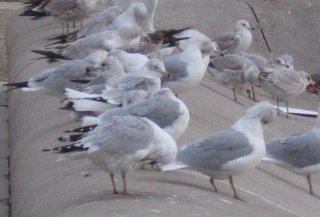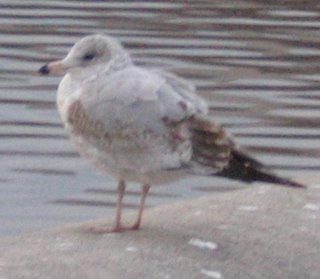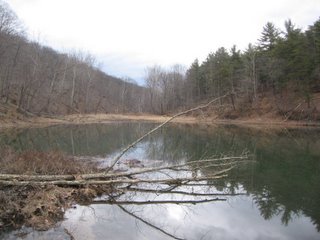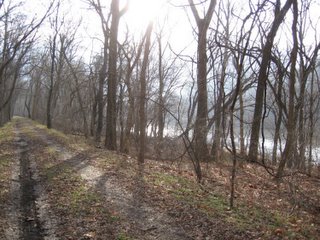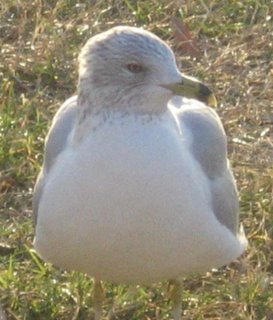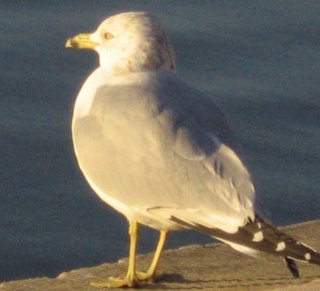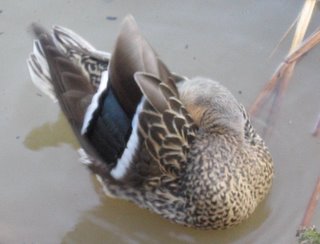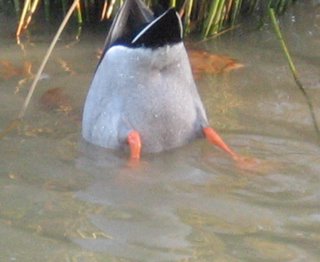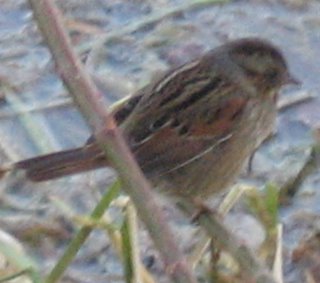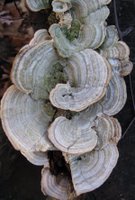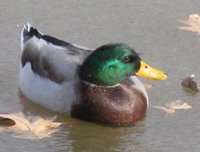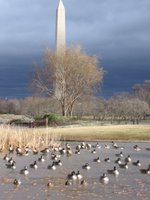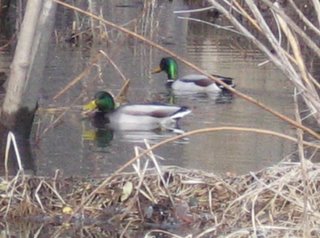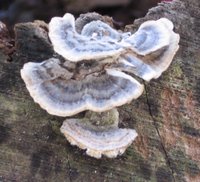Since I had some free time at the beginning of this month, I resolved to get my birding for this year off to a fast start by hitting as many of DC's better birding spots as possible. I started somewhat slowly with a trip to the zoo on Wednesday, and then the birding built momentum from there. This weekend ends with only a few places - Rock Creek Park, McMillan Reservoir, and the southwest riverfront - left unvisited. As a result, I am already ahead of my 2004 pace, which was my best birding year so far.
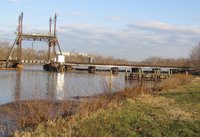
This morning I visited Anacostia Park in southeast Washington. This quiet park tends to be good for waterbirds, and occasionally some landbirds that prefer open areas. This morning I did have some good waterbirds here. There was a handful of
ruddy ducks across from the
Commodore Barry; farther down, a
pied-billed grebe swam in the river. All the common local gulls were represented, as well as an adult
lesser black-backed gull. I also saw my first
ruby-crowned kinglet of the year all the way down near the South Capitol bridge.
I did leave with a question, and that is whether or not I saw a
cackling goose. Several cackling geese have been reported in DC so far this winter, but today was the first time I had seen a real candidate for that species. Cackling goose is a composite of several subspecies that used to be considered part of the
Canada goose species until the species was split in two last year. Cackling geese look very similar to Canada geese, except that they are smaller, have proportionately shorter necks, and have stubbier bills. The subspecies most likely to be found in the eastern United States, Richardson's cackling goose, is grayer overall, with breast color matching the color of the flanks. One goose among a flock in the Anacostia River matched this description, though the viewing range was a bit too far for my judgment to be conclusive. I took some photographs of this bird; the best of the lot are shown below.
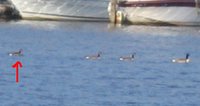
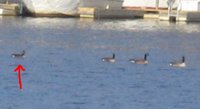
After lunch, I decided to visit the waterways on the other side of town, namely the Georgetown Reservoir and the neighboring C&O canal. The reservoir sometimes has good numbers of waterfowl in winter; today it was mostly deserted except for the gulls. There were some
lesser scaup and at least one
canvasback all the way on the far side of the water. One adult lesser black-backed gull was among the common gulls on the dike.
Down at Fletcher's boathouse I followed a foottrail leading west along the river instead of the towpath. This trail soon degraded into little more than a deer path, and even that was sketchy at times. Still I pressed on with that route, since I knew I would not get lost; I was in an area bounded by the Potomac and canal, and Fletcher's boathouse and the Chain Bridge. As long as I kept on in the same direction there would eventually be a way out.
The bushwhacking paid off, as I passed through some very birdy meadows. One spot had a female
common yellowthroat, which perched on a tree branch at eye level and then glided down into the grass; it showed its yellow underside on the way down. Farther on, close to the Chain Bridge, there was a spot full of sparrows. These included
field and
savannah sparrows, in addition to the more common ones. Other birds seen along the way included
eastern bluebird,
belted kingfisher, and
red-shouldered hawk. The deer paths, of course, also had deer, which fled before my footsteps.
When I reached the Chain Bridge I went up on the walkway to look at the ponds. These held mostly
mallards, but also a
hooded merganser and several
common mergansers. The view from the Chain Bridge was a lovely way to end a long day of birding.
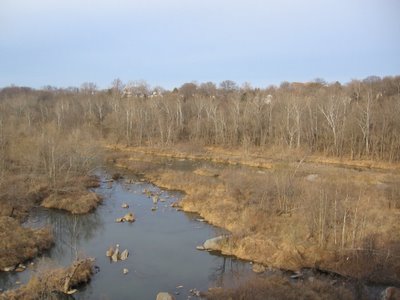
SPECIES SEEN: 45
Pied-billed Grebe
Great Blue Heron
Cackling Goose (?)
Canada Goose
Mallard
Canvasback
Lesser Scaup
Hooded Merganser
Common Merganser
Ruddy Duck
Red-shouldered Hawk
Red-tailed Hawk
Ring-billed Gull
Great Black-backed Gull
Lesser Black-backed Gull
American Herring Gull
Rock Pigeon
Mourning Dove
Belted Kingfisher
Red-bellied Woodpecker
Yellow-bellied Sapsucker
Downy Woodpecker
Hairy Woodpecker
Northern Flicker
Pileated Woodpecker
Golden-crowned Kinglet
Ruby-crowned Kinglet
Carolina Wren
Northern Mockingbird
Eastern Bluebird
American Robin
Carolina Chickadee
Tufted Titmouse
Blue Jay
American Crow
Fish Crow
European Starling
House Sparrow
American Goldfinch
Common Yellowthroat
Field Sparrow
Savannah Sparrow
Song Sparrow
White-throated Sparrow
Dark-eyed Junco
Northern Cardinal



